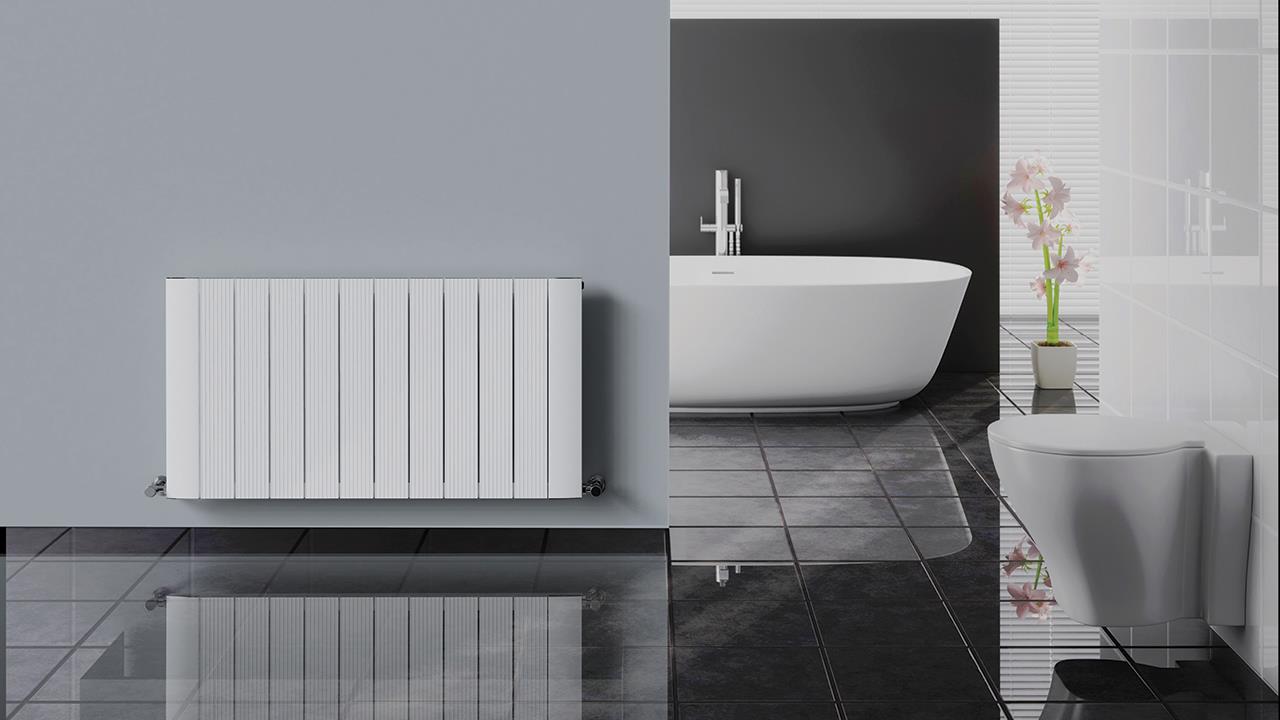

Steve Birch, Sales Director at Vogue (UK), discusses what impact radiator material and finish can have on performance, plus which solutions are best for what settings.
Sustainability is huge news in interiors this year, as both climate change and a global pandemic have disrupted ‘business as usual’ and focused consumer attention on being kinder to the planet. Finding the sweet spot between pricing and sustainability may well be the next challenge for the heating professional as we discover how many homeowners are prepared to pay more for products, which are perceived to be ‘greener’ or ‘longer lasting’.
In some regards, materials used in heating manufacture are already sustainable, with some brass, stainless steel, and aluminium products boasting 30-year quality assurance guarantees – this certainly represents excellent value for money over three decades in comparison with a depreciating asset like the family car.
While cast-iron has been with us since the first radiators and heating designs of the 19th century, today’s metal of choice is aluminium – providing excellent efficiency and superior heat transfer. The key USP is that aluminium heaters use a very low water content, which means they warm up quickly and, by virtue, help to reduce energy use. Aluminium products are also lightweight, so they can be installed almost anywhere and mounted on all types of internal wall: stud or solid. And, as one of the most recyclable metals on the planet, aluminium products can enjoy a new lease of life time and time again.
Of course, heating demands can vary from room to room and hygiene is all important when it comes to high-traffic areas like the kitchen, bathroom, and downstairs cloakroom. Towel warmers are a natural fit here and in terms of material, stainless steel is ideal in humid environments being tough, easy to clean, and resistant to corrosion. It can also retain heat for longer when compared to aluminium heating solutions, so the room will stay warm for a short while after the heating is switched off.
Brass radiators are an excellent choice for traditional interiors, which are typical of more period homes prone to draughts through poor insulation and very thin, or particularly exposed, walls. Delivering a high heat output, brass heating designs can easily be customised in a host of different colours and finishes.
We all know that shiny surfaces do not go hand in hand with heat conduction, so the shinier a radiator is, the lower the heat output it will provide.
Looking at heating purely from a scientific point of view, matt black is the most efficient radiator colour choice, which is good news for enduring colours trends like black and dark grey. Dark, textured finishes will offer a higher output as the rough surface will help to absorb, retain, and re-radiate heat around the room, so educating customers around their core requirements is critical and will help them to weigh up both material and finish in combination with heat output and efficiency.
As styles in home decoration evolve to meet the rising demand for bespoke specification, premium manufacturers have responded with a greater range of tactile finish options that are iridescent, highly textured, or painted, with colours ranging from standard to bespoke.
Innovative surface treatments and hand-finishing techniques are paving the way for special finish options never before seen on a radiator or towel warmer. This year will reveal a new level of tactility in the bathroom, and that a sensory heating solution which delivers on both form and function is the answer.
The ability to customise the home was once viewed as a luxury, however the last few years has shown that tailor-made heating design can be informal and within your customer’s means. This style of special order product design is set to grow in the coming years, as a bespoke blueprint can now be brought to life and factor in everything from colour and finish, to electrical connections and even country-specific design requirements.
We are seeing an unprecedented level of creativity in all areas of interior design and product development, and this has led to a renewed focus in 2020 for lifestyle home heating that plays to the individual and core design values from the outset.
If you'd like to keep up-to-date with the latest developments in the heating and plumbing industry, why not subscribe to our weekly newsletters? Just click the button below and you can ensure all the latest industry news and new product information lands in your inbox every week.